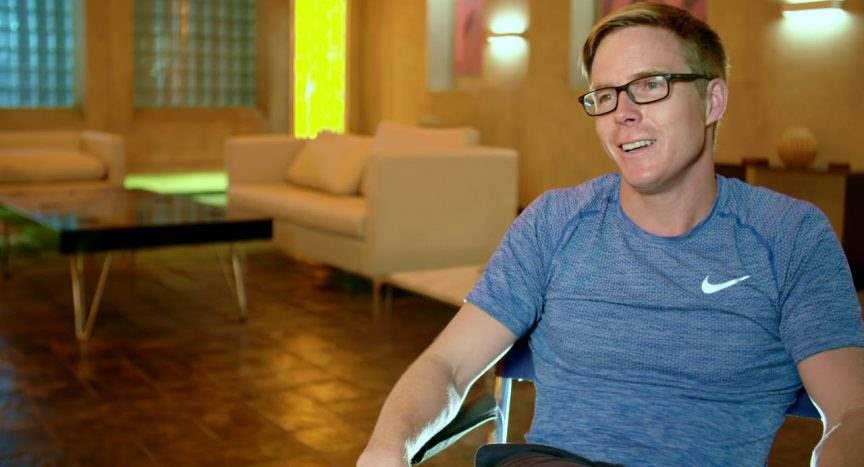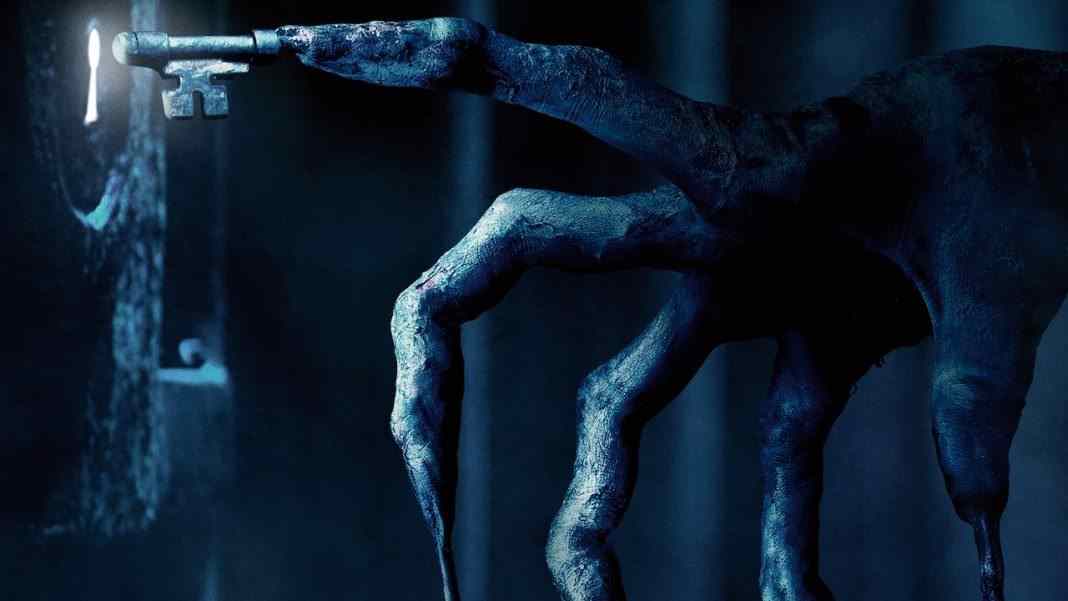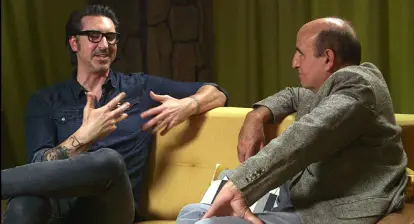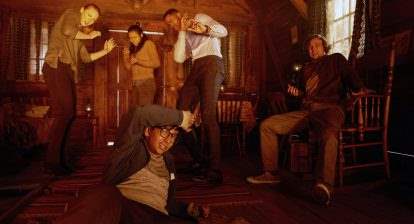Adam Robitel has had a promising career thus far. His first feature, The Taking of Deborah Logan, was the exact indie-horror many first-time filmmakers hope for. The film had success on home media, and granted him the opportunity to follow in James Wan and Leigh Whannell’s footsteps and direct the fourth film in the Insidious franchise, The Last Key.
The film made over 6 times its budget in the States, and Sony opted to give Robitel a franchise of his own to start. Robitel chose Maria Melnik and Bragi F Schut’s script, The Maze, and turned it into the feature film we now know as Escape Room. Adam graciously took some time and talked to Wicked Horror in support of the film’s home video release. Escape Room is now available on DVD, Blu-ray, and DigitalHD.
Also See: Escape Room is Clever and Entertaining [Blu-ray Review]
WH: Hey, Adam. Really excited to dive into this one with you. I know it’s only April, but it’s one of my favorite films of the year so far.
Adam Robitel: You’re very kind. I’m glad you dug it, man.
WH: First thing I wanted to hit was the genre of the film. A lot of the marketing pressed it as a horror flick while IMDb lists it as action, adventure, and drama; I just wanted to get your take on what genre you think fits it best.
Adam Robitel: I categorize it as a psychological thriller. I sort of call it a “psychological roller coaster ride,” or at least that’s how I always envisioned it in my head. I don’t think its straight horror; one of the mandates going in was that we weren’t going to do gore. I wanted the movie to live outside of films like Saw or Cube that do that so well. I’d lean towards psychological thriller, but some people would tend to disagree and that’s totally fine.
WH: Your first two movies, The Taking of Deborah Logan and Insidious: The Last Key were blatant horror films. Were you making a conscious effort to stay away from horror with this movie?
Adam Robitel: You’re always looking at, “what’s the angle?” After I read the script, I realized how popular escape rooms were. I didn’t even know what an escape room was, to be completely candid, so I went out and did like 15 of them. The best ones were really visual, and they sort of transformed so that the players could interact with them. Like you solve a puzzle and a blacklight turns on that then reveals a map you couldn’t see; so, I got excited from a visual perspective.
Then I thought, “Nobody can out-Wan Wan.” James has such a market on the Insidious’ and supernatural [films] of the world, why not do something that’s a little bit different. So, it was this vital choice of either I could do another possession or horror film, like a straight supernatural thriller, which I love, don’t get me wrong, or I could do something like this which could get more of an international audience. Keep in mind from a purely business perspective, supernatural movies can’t even go to china, that with escape rooms being very popular in Asia, it seemed like the right time to take a gamble and not rely on the jump scares as much.
WH: Did you have any type of productive bonding experience for the cast beforehand?
Adam Robitel: We had a couple early table reads which really got our chemistry going and then had some really good rehearsal time. The first day we were in the lobby shooting it linearly; basically, the first day, the characters are meeting is the first day of shooting, which helped in a way, to shoot it as chronologically as possible.
Deborah Ann Woll, who was probably the most seasoned of the actors, she was sort of like the mother hen who kind of brought everybody together and I think they all brought their A-game. They were each so committed to it that it helped bring out each other’s performances. They were just a little family; I mean you get stuck on that sound stage for 12 hours a day, five days a week and by day three you’re like old friends. There was a lot of moving parts and the movie had a lot of visual effects, it definitely took some acclimating to. I really think they did a great job.
WH: I’m actually talking to Tyler (Labine) in a few days, he’s a great example of my next question. It was surely suspenseful, but none of the characters felt like caricatures; they were real people. Tyler can be silly, he can be fun, but he was down to Earth and playing it completely straight. Was this something you did intentionally?
Adam Robitel: Oh my God, he’s my favorite person. He’s hilarious. Initially, Mike was meant to be a sort of older, funny, dad kind of guy, and while he does crack a dad joke or two, he really brought an accessibility that we weren’t expecting.
You know, it’s hard, the first act of these movies are all just truncated now because most audiences don’t have the attention span. I don’t know how old you are, but I remember movies in the ‘80’s and 90’s where a good 40 minutes was just introductions. You don’t have time to set up characters the way you want to, so you do it by writing, “Here’s the funny older guy; here’s the expert gamer kid; here’s the veteran.” How much character pipe do you lay, how peculiar and odd should we make these characters? Some caricature is good because the audience can go, “Oh, I think I know who this person is” quickly, but at the same time we don’t want too much too quickly. It’s a tight rope.
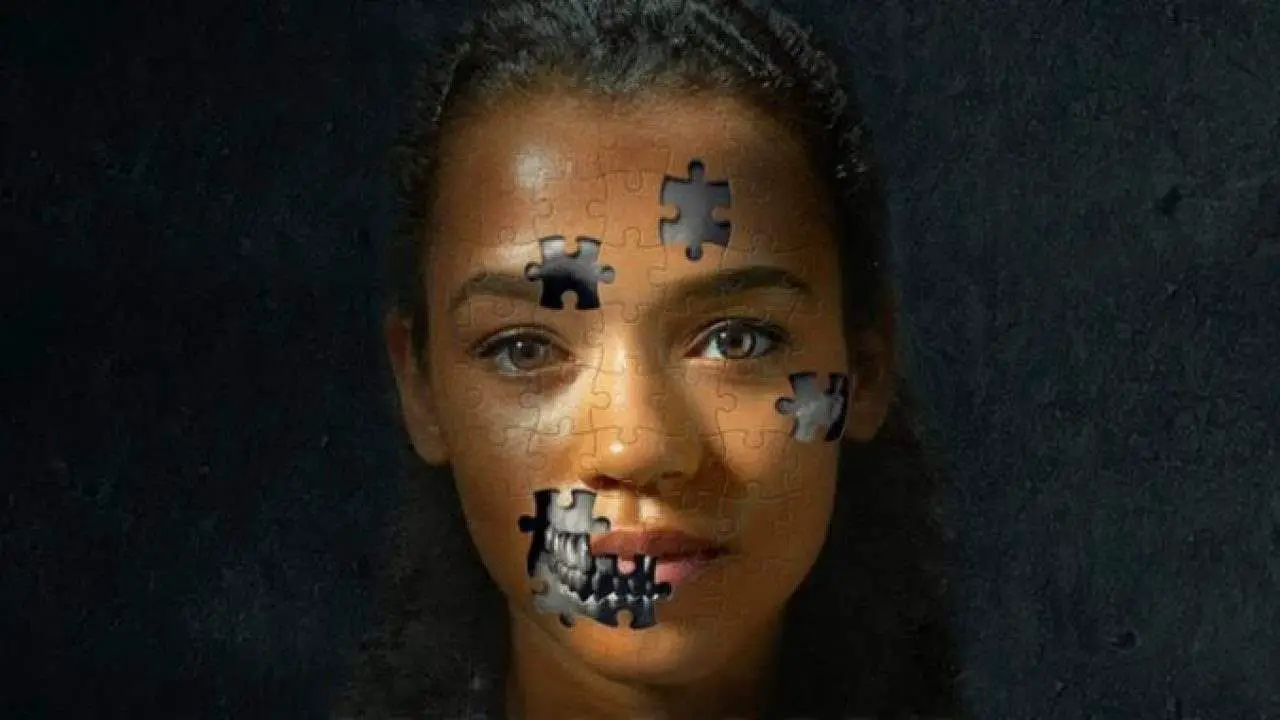
WH: I wanted to touch on something you were saying earlier. You mentioned when you went to escape rooms that you saw how elaborate and visually striking they were. I know it’s a cliché to say, but honestly the rooms seemed to be one of the characters in the movie. Did you and production designer Edward Thomas just collaborate together on exactly how you wanted each room to look?
Adam Robitel: Ed Thomas is amazing. He’s from the UK and he’s done a lot of Resident Evil movies and what not. He just-he hit the ground running. We shot in South Africa; I was terrified and knew no one there, but Ed had shot a lot of movies there. He had this incredible team that was just ready and crewed right up. It’s different down there, they can just start pouring concrete. They don’t have the zoning laws and all the shit that we have here.
We really wanted each room to be its own little mini-movie. Marc Spicer, our DP (director of photography/cinematographer), shot lots of Fast and Furious [films] and Lights Out, so, for me he was so instrumental with Ed to figure out ways of building light into the sets or be able to go 365 degrees. It was really important for me to make sure it felt like these characters were actually trapped and to do that you have to show the audience the entire set. Give them the illusion that there’s not a crew, there’s no way out.
Everything really had to be on the page. My writer, Maria Melnik, really had to spell everything out in a linear way towards the end of the room. For example, in the ice room, the ice-block that they bring up from the water, that’s a fabricated prop. That’s something that spent weeks and weeks to make, you can’t just go out and buy that from a warehouse; you have to build that. Also, the art department, it was such a tour de force for them. Everything they did was on display. I can’t think of a movie where you have so many macro-shots where you could see each and every prop. Everyone really just picked up the baton and ran with it.
WH: Not so much if you were in the Escape Room, but objectively looking outward in, which of the rooms is your favourite?
Adam Robitel: I think I was most proud of the billiard room. We were told it was impossible and I had such a huge pitch for it. You know, we were a little movie with very few resources. The whole set was built six feet off the ground, everything had to be engineered structurally to be safe; when Deborah Ann Woll’s climbing across the walls or climbing along the top. Her safety lines actually had to go all the way up through the ceiling to the scaffolding, it was very logistically complicated.
Anecdotally, we had a shot at the end when Zoey cracks that the code, it’s upside down. I wanted a crane to rotate around the bar and flip upside down so when the ball falls down, it goes up into Deborah’s hand. We spent two hours trying to get this shot and had to bring in a dinosaur of a crane that had no place being on a film set, but we finally got the shot at the 11th hour.
Going from a movie like Insidious: The Last Key, which had no visual effects, to this film was something that was tough. Escape Room had loads; Escape Room actually had more visual effects than Venom. Most was smaller clean-up kind of stuff, but it added up.
WH: I wanted to touch on the second to last room, I’m not sure how to word it other than the “trippy” room. I always think it’s fascinating, because you don’t have a writing credit on the film, only Maria Melnik and Bragi F. Schut, so how were you able to translate that from page to film?
Adam Robitel: Well that room actually, and I’ll be completely candid now that the movie is out, we sort of ran out of resources by that point in terms of what it could be. Initially, Maria had written a version of a crazy factory room where these presses are coming down, basically an Indiana Jones thing where the presses were almost crushing them.
We had gone to an old factory in Cape Town and I was afraid someone was going to get tetanus. It was beyond our scope I think and so I just made a decision. I said, “Let’s try and do something a little different.” It was originally going to be this room full of optical illusions, but we weren’t [chuckles], we weren’t entirely successful with it. The conceit of a neuro-toxin which makes things all trippy I thought was fun. If we’re going to have a mano a mano fight, you need to up it from the billiard room somehow. My college days of eating a fungus or two may have helped.
WH: That’s what I thought had happened at first! One thing I’ve been trying to wrap my brain around is how some of the rooms are obviously tailored to the players, while others seem more or less random. Was this a coincidence?
Adam Robitel: Not at all. I think the lobby was Deborah’s because she has PTSD from fire. The cabin was Logan (Miller) because of the antlers and his car crash. The ice room was supposed to be for Jason (Jay Ellis) because of his exposure and the guy on the boat. The billiard room was Zoey (Taylor Russel) because she went down in a plane crash and landed upside down. The hospital was kind of supposed to be the coherence of all of them, but also Nik (Dodani) because Danny’s parents died from carbon monoxide. Then the library, or the crushing room, was for Mike (Tyler Labine) because he was almost crushed in the mines.
WH: That’s much subtler than I feel like a freshman filmmaker would be confident including. So, the film ended on a definite cliff-hanger. I was researching and it said that Sony had already greenlit the sequel. Anything you can tell us about it?
Adam Robitel: Yeah, we’re dated. We’re already discussing concepts for new rooms and we’re expecting a script in a couple weeks! We’re full steam ahead. We have our work cut out for us because we used a lot of the big ones, whether it being gravity, crushing, or fire. How do you kill people without using too much gore or any gore at all, you know?
WH: Before you go, I always like to hit on one more thing! I know you said you don’t see the film as a horror movie, but this is Wicked Horror. I like to ask all the actors, directors, writers, and everyone we interview to give me one horror movie that is either your favorite or one that you think got criminally overlooked as of late.
Adam Robitel: The movie very few people have seen that I absolutely love is called Session 9. It was the first feature I think Brad Anderson shot and it was filmed at the Danvers Insane Asylum, a place I grew up near outside of Boston. It’s super creepy. They wrote the script based on the location. If you like a slow burn, psychological thriller, The Shining-esque, Session 9 is great.
WH: Adam, thanks for talking. Like I said, really dug the movie. Not just excited about the sequel but whatever you have coming down the pipe.
Adam Robitel: Thanks, Mark. I really appreciate it!
Escape Room is now available on Blu-ray/DVD.
*Featured Image Credit: Movie Roar
